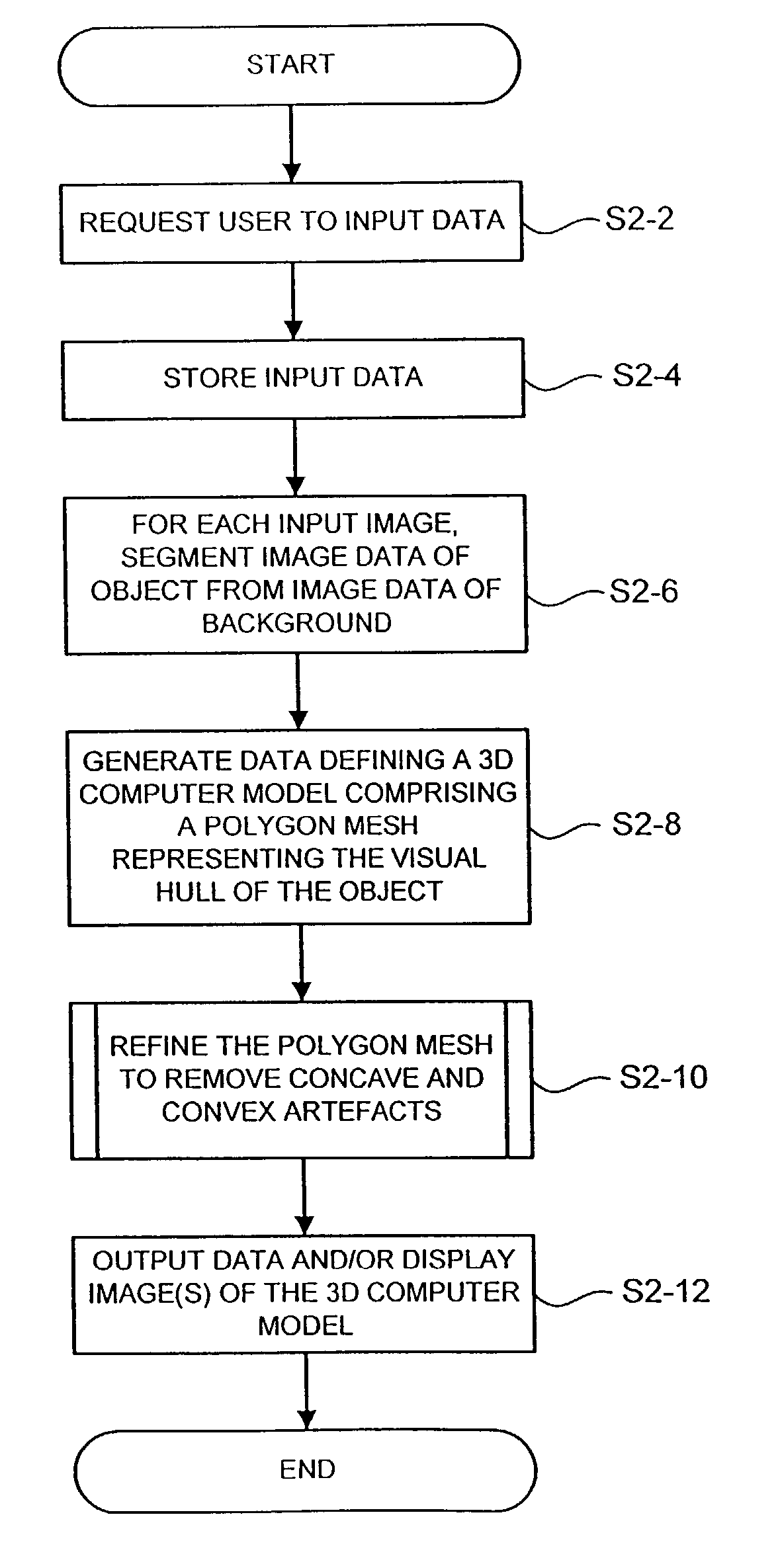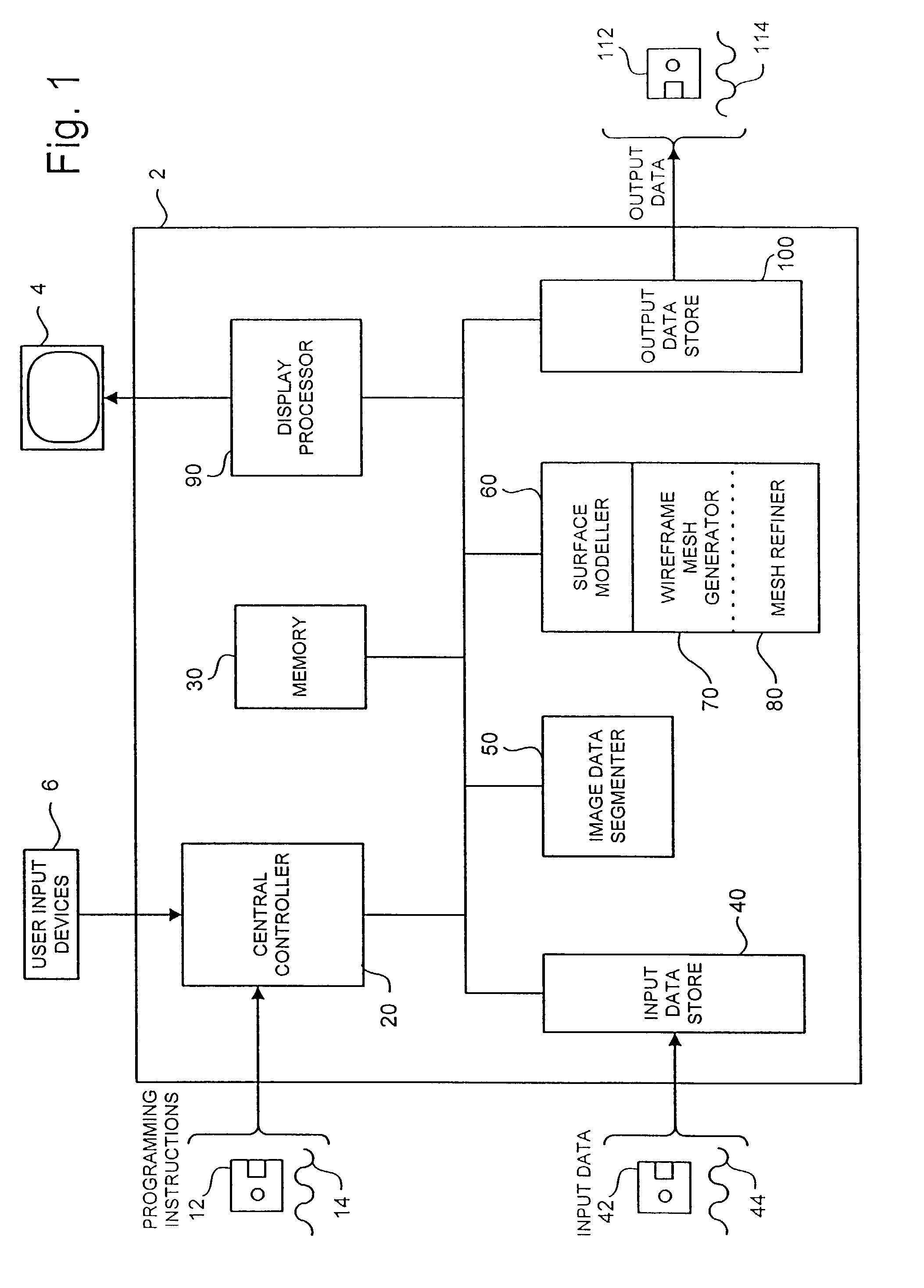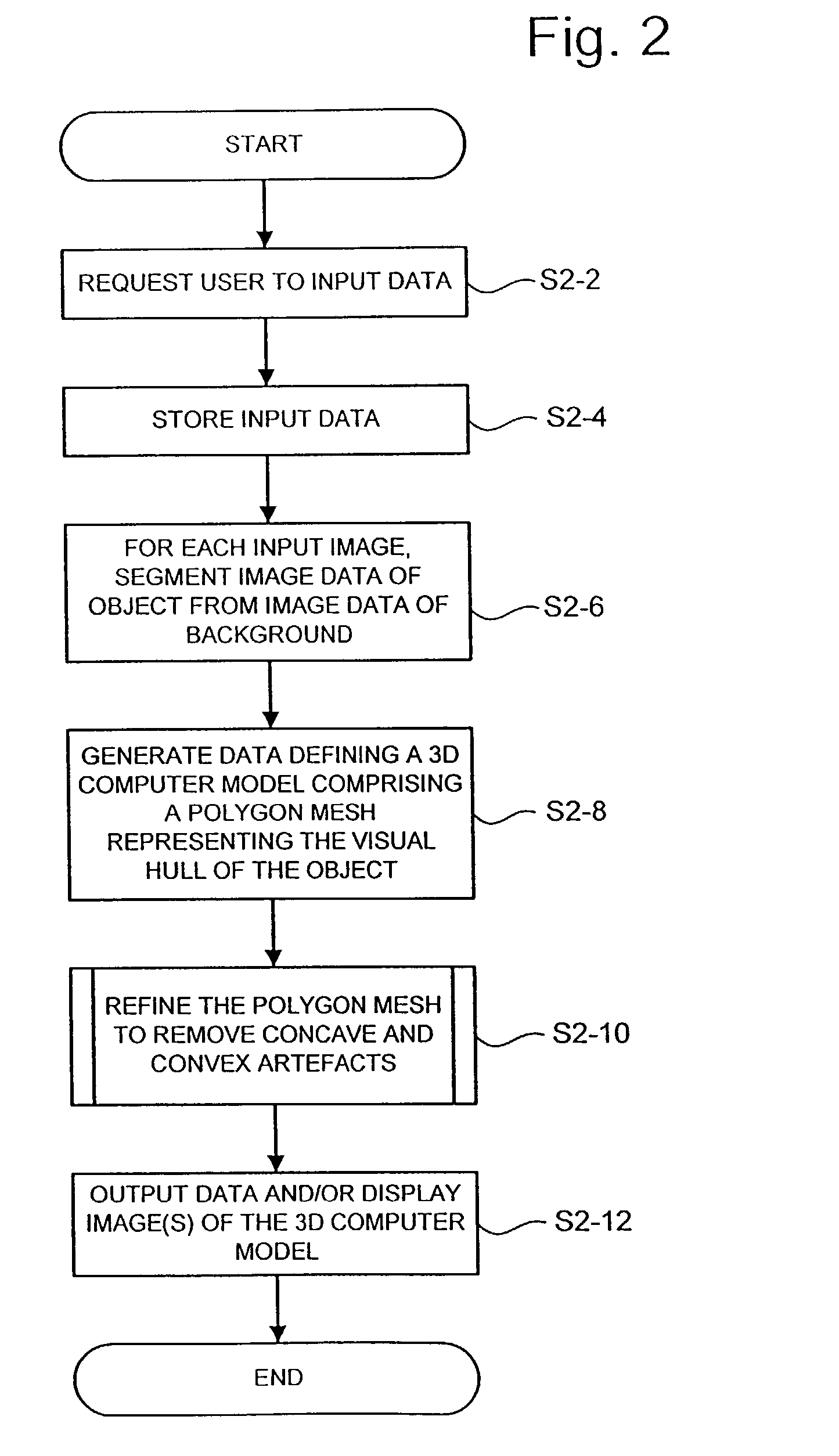3D computer model processing apparatus
- Summary
- Abstract
- Description
- Claims
- Application Information
AI Technical Summary
Benefits of technology
Problems solved by technology
Method used
Image
Examples
first embodiment
[0024]Referring to FIG. 1, an embodiment of the invention comprises a processing apparatus 2, such as a personal computer, containing, in a conventional manner, one or more processors, memories, graphics cards etc, together with a display device 4, such as a conventional personal computer monitor, and user input devices 6, such as a keyboard, mouse etc.
[0025]The processing apparatus 2 is programmed to operate in accordance with programming instructions input, for example, as data stored on a data storage medium, such as disk 12, and / or as a signal 14 input to the processing apparatus 2, for example from a remote database, by transmission over a communication network (not shown) such as the Internet or by transmission through the atmosphere, and / or entered by a user via a user input device 6 such as a keyboard.
[0026]As will be described in more detail below, the programming instructions comprise instructions to cause the processing apparatus 2 to become configured to process input da...
second embodiment
[0089]In the first embodiment described above, the processing performed by mesh refiner 80 at step S2-10 to refine the polygon mesh to remove concave and convex artefacts comprises decimation processing to remove edges in the polygon mesh without affecting the resulting polygon mesh's consistency with the silhouettes of the subject object.
[0090]However, mesh refiner 80 may be arranged to perform other types of processing at step S2-10 to refine the polygon mesh to remove concave and convex artefacts.
[0091]For example, a second embodiment will now be described in which mesh refiner 80 performs processing to smooth the polygon mesh without affecting the resulting mesh's consistency with the silhouettes of the subject object.
[0092]The components of the second embodiment and the processing operations performed thereby are the same as those in the first embodiment, with the exception of the processing performed by mesh refiner 80 at step S2-10 in FIG. 2. Accordingly, only the processing ...
PUM
 Login to View More
Login to View More Abstract
Description
Claims
Application Information
 Login to View More
Login to View More - R&D
- Intellectual Property
- Life Sciences
- Materials
- Tech Scout
- Unparalleled Data Quality
- Higher Quality Content
- 60% Fewer Hallucinations
Browse by: Latest US Patents, China's latest patents, Technical Efficacy Thesaurus, Application Domain, Technology Topic, Popular Technical Reports.
© 2025 PatSnap. All rights reserved.Legal|Privacy policy|Modern Slavery Act Transparency Statement|Sitemap|About US| Contact US: help@patsnap.com



